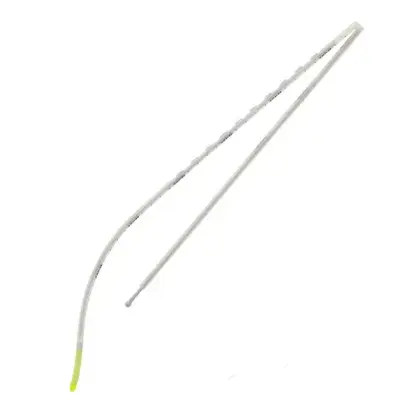Steerable intubation guide
FlexTip®
Traditional intubation introducers are valuable tools, especially in difficult cases, but sometimes they are not sufficient on their own.
Having precise control over the introducer’s tip makes airway exploration much easier. Whether using direct laryngoscopy or video laryngoscopy, the FlexTip Intubation Introducer facilitates the exploration pathway.
Features:
- Silicone tip reduces the risk of tracheal trauma
- Steerable tip for easy positioning at the vocal cords
- Soft tip texture minimizes trauma during intubation
- Flexible fluorescent tip ensures catheter placement accuracy
- Fluorescent coating visible even under UV light on some laryngoscopes
- Improves intubation, optimizing exploration time and reducing complications
- Facilitates exploration in difficult airway scenarios
- Anterior flexion insertion; can be straightened to advance or flexed as needed
- Strategically placed sliding tabs prevent them from passing through the vocal cords
- Easy-to-manipulate tabs, even when wearing gloves
- Graduated markings every 10 cm from 10 to 50 cm (total length 65 cm)
- Recommended for use with endotracheal tubes with a minimum internal diameter of 7 mm
- Latex-free technology
- Individually packaged sterile units
- Available in a folded version for easy storage in emergency and critical care kits
- Box of 10 units
Procedure
1. Apply a generous amount of water-based lubricant to the siliconetip (fluorescent) of the FlexTip introducer.
2. Using either direct or video laryngoscopy, insert the introducer tip through the vocal cords.
3. Maneuver the introducer tip by pressing the proximal or distal control tabs along the back of the introducer, and combine this with rotation for better navigation.
4. Once past the vocal cords, advance the introducer further. The graduated markings provide additional information about insertion depth.
5. When the introducer is in position, advance the endotracheal tube over it.
6. Hold the endotracheal tube in place while withdrawing the introducer.
7. Verify tube placement using standard clinical techniques.

